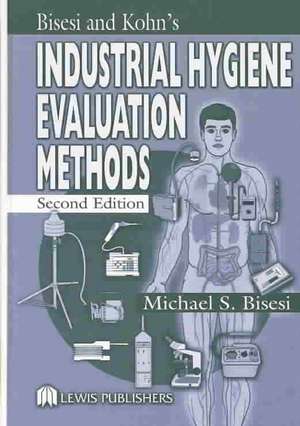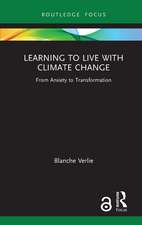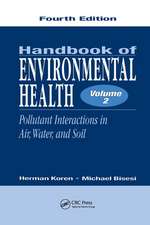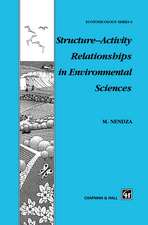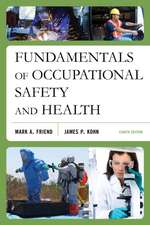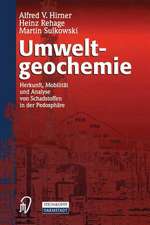Industrial Hygiene Evaluation Methods
Autor Michael S. Bisesien Limba Engleză Hardback – 27 aug 2003
Bisesi and Kohn's Industrial Hygiene Evaluation Methods, Second Edition introduces basic methods for evaluating work and some non-work environments in order to detect and measure physical, chemical and biological agents, as well as hazardous ergonomic factors. The book is divided into relatively short units that provide concise overviews and descriptions of basic concepts. Each unit is followed by practical technical exercises. These exercises foster the understanding of basic industrial hygiene principles and practices for collection, detection, identification, calculation, and interpretation of qualitative and quantitative data. Exercises can be conducted in a setting in which agents and other factors are detectable and measurable. Alternatively, the simulated evaluation exercises that are included can be conducted in a classroom or laboratory.
This book is an introductory reference for environmental and occupational health and safety students and practitioners. It is an indispensable tool that illustrates methods fundamental to industrial hygiene practice, and is just as valuable in the professional's office as it is in the classroom.
Preț: 1227.27 lei
Preț vechi: 1496.67 lei
-18% Nou
Puncte Express: 1841
Preț estimativ în valută:
234.84€ • 245.69$ • 195.08£
234.84€ • 245.69$ • 195.08£
Carte tipărită la comandă
Livrare economică 02-16 aprilie
Preluare comenzi: 021 569.72.76
Specificații
ISBN-13: 9781566705950
ISBN-10: 1566705959
Pagini: 312
Ilustrații: 20 Tables, black and white; 133 Illustrations, black and white
Dimensiuni: 178 x 254 x 23 mm
Greutate: 0.72 kg
Ediția:Revizuită
Editura: CRC Press
Colecția CRC Press
ISBN-10: 1566705959
Pagini: 312
Ilustrații: 20 Tables, black and white; 133 Illustrations, black and white
Dimensiuni: 178 x 254 x 23 mm
Greutate: 0.72 kg
Ediția:Revizuită
Editura: CRC Press
Colecția CRC Press
Public țintă
ProfessionalCuprins
Evaluation of Hazardous Environmental Agents and Factors. Hazardous Environmental Agents and Factors. Monitoring and Analytical Instruments Used to Evaluate the Occupational Environment. Evaluation of Airborne Total Particulate. Evaluation of Airborne Respirable Particulate. Evaluation of Airborne Fibers as Asbestos. Evaluation of Airborne Metal Dusts and Fumes. Evaluation of Airborne Particulate. Evaluation of Airborne Organic Gases and Vapors. Evaluation of Airborne Inorganic and Organic Gases, Vapors, and Mists. Evaluation of Airborne Combustible and Oxygen Gases. Evaluation of Airborne Inorganic and Organic Gases and Vapors. Evaluation of Airborne Toxic Gases and Vapors. Evaluation of Surface and Source Contaminants. Evaluation of Airborne Bioaerosols. Evaluation of Airborne Sound Levels. Evaluation of Airborne Sound Levels. Evaluation of Personal Hearing Thresholds. Evaluation of Heat Stress. Evaluation of Illumination. Evaluation of Airborne Nonionizing Microwave Radiation. Evaluation of Airborne Nonionizing Low Frequency Electromagnetic Radiation. Evaluation of Airborne Ionizing Radiaion. Evaluation of Ergonomic Factors. Evaluation of Air Pressure, Velocity, and Flow Rate. Evaluation of Personal Protective Equipment. Evaluation of Personal Pulmonary Function. Bibliography. Appendices. Index.
Recenzii
"This is a popular and practical textbook…It is as useful as a laboratory manual as it is as a textbook. This book will occupy shelves along with other accepted references in industrial hygiene…Given the breadth of the occupational and environmental hygiene disciplines, this second edition will be extensively referenced and read."
- J. Thomas Pierce, PhD, University of Kansas Medical Center
- J. Thomas Pierce, PhD, University of Kansas Medical Center
Descriere
This book introduces basic methods for evaluating work environments in order to detect and measure threatening physical, chemical, and biological agents and hazardous ergonomic factors. It provides concise overviews and descriptions of basic concepts, which are followed by practical technical exercises. These exercises foster the understanding of basic principles and practices for collection, detection, identification, calculation, and interpretation of qualitative and quantitative data. An indispensable tool that illustrates methods fundamental to industrial hygiene practice, this book is just as valuable in the professional's office as it is in the classroom.
